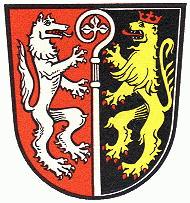Ingolstadt (kreis): Difference between revisions
Jump to navigation
Jump to search
Knorrepoes (talk | contribs) m (Text replace - "'''Origin/meaning :'''<br/>" to "====Origin/meaning====") |
Knorrepoes (talk | contribs) m (Text replace - "|width="15%"|50 px|right |} " to "|width="15%"|50 px|right |}<seo title="Wappen, Gemeindewappen" /> ") |
||
| Line 3: | Line 3: | ||
|width="70%" align="center" |'''Heraldry of the World<br/>Civic heraldry of [[Germany]] - [[Deutsche Wappen|Deutsche Wappen (Gemeindewappen/Kreiswappen)]]''' | |width="70%" align="center" |'''Heraldry of the World<br/>Civic heraldry of [[Germany]] - [[Deutsche Wappen|Deutsche Wappen (Gemeindewappen/Kreiswappen)]]''' | ||
|width="15%"|[[File:Germany.jpg|50 px|right]] | |width="15%"|[[File:Germany.jpg|50 px|right]] | ||
|} | |}<seo title="Wappen, Gemeindewappen" /> | ||
'''INGOLSTADT (IN)''' | '''INGOLSTADT (IN)''' | ||
Revision as of 19:18, 5 November 2012
| Heraldry of the World Civic heraldry of Germany - Deutsche Wappen (Gemeindewappen/Kreiswappen) |
INGOLSTADT (IN)
State : Bayern
Incorporated into : 1974 Eichstätt and city of Ingolstadt
Origin/meaning
The arms were granted on October 11, 1962.
The arms are a combination of symbols of the former territories to which most of the district belonged. The crosier is taken from the arms of the Eichstätt abbey, as a part of the district belonged to the abbey until 1803. The lion is the lion of the Pfalz (palatinate), as a large part of the district belonged to the Pfalz.
The fox in the right part is taken from the arms of the city of Vohburg, and has been used since the 14th century.
Literature: Stadler, K. : Deutsche Wappen - Bundesrepublik Deutschland. Angelsachsen Verlag, 1964-1971, 8 volumes.

